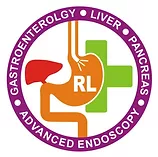GASTROSCOPY (UPPER GI ENDOSCOPY)

What is Gastroscopy?
Endoscopy (Gastroscopy ) is a procedure in which the gastro-intestinal tract (GI tract) is viewed through a lighted, flexible tube with a camera at the end (endoscope). Small samples of tissues cells (biopsy) can also be collected and sent for testing.
Upper Endoscopy
The esophagus, stomach, and small intestines can be viewed by a thin flexible tube inserted through the mouth
Preparation
2. Medications can be given by vein if needed.
3. Please arrange for a ride home. You may feel drowsy after the procedure due to medications.
4. Upper endoscopy: No food or drink is allowed for six hours before the procedure. An empty stomach allows for the best view and safest exam.
What can I expect during endoscopy?
What happens after endoscopy?
You will be observed closely until most of the effects of the medication have worn off. Your throat might be a little sore, and you might feel temporarily bloated due to the air introduced into your stomach during the test. You will be able to eat after you leave unless your doctor instructs you otherwise.
Your doctor generally can tell you your test results on the day of the procedure; however, the results of some tests might take several days.
If you received sedatives, you won’t be allowed to drive after the procedure even though you might not feel tired. You should arrange for someone to accompany you home because the sedatives may affect your judgment and reflexes for the rest of the day.
